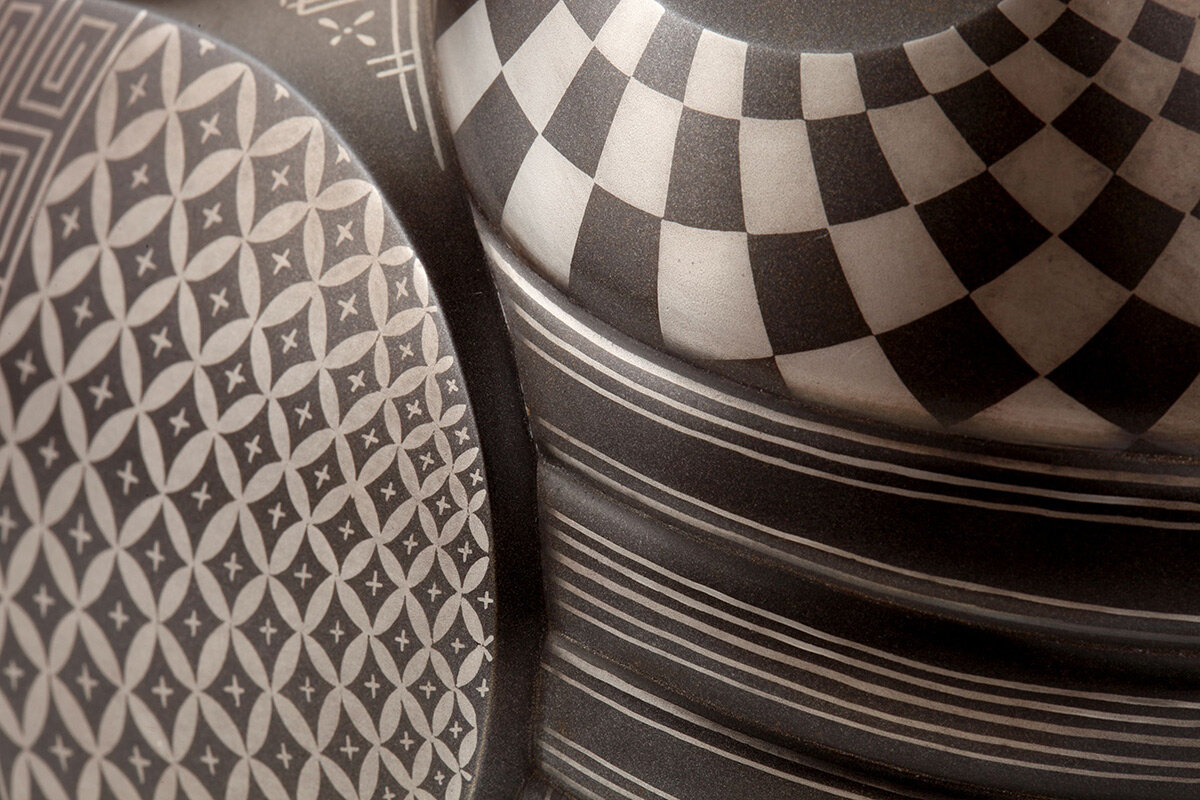ART DECO & MODERNISM
TAKAHASHI KAISHU, 1936 BUNTEN KANSATEN EXHIBITION, MANDARIN DUCK KORO
Koro or incense burner in the form of a modernist Mandarin duck. Of cast shibuichi or silver-bronze inlaid extensively in silver. Signed on the reverse by the artist with an inlaid seal-form signature: Kaishu (Takahashi Kaishu, the go or art name of Takahashi Isamu, 1905 – 2004). Showa 11 or 1936.
With the tomobako or original box, inscribed on the exterior of the lid: Kaga Zogan Tori no Koro or Kaga Inlay Bird Incense Burner; and on the reverse of the lid signed: Kaishu Takahashi Isamu Saku or Made by Kaishu Takahashi Isamu, and sealed. With the tomogire or original white silk wrapping cloth, signed and sealed by the artist.
Also included in the box is a document with handwritten notes by a later collector. This paper describes the piece as a bird (form) incense burner and sculpture (okimono), with silver Kaga inlay. It notes the tomobako, the artist’s name as Takahashi Isamu, his go as Kaishu, and his participation in the Nitten as an exhibitor and judge. From this we know that the notes were written sometime after the Pacific War, likely in the 1960s – 1980s.
This koro was made for exhibition at the Bunten Kansaten in 1936, and it is illustrated in the Nittenshi, volume 12, page 439, # 95.
Takahashi Kaishu was born in Kanazawa, and graduated from the Tokyo School of Fine Art in 1929. In the same year he was accepted into the Teiten. In 1930, Kaishu exhibited in Belgium at the World Exposition and received an award, also winning a gold medal in 1933 at the Chicago International Exposition. After the War, Takahashi Kaishu continued to exhibit widely. In 1982 he was designated Important Intangible Cultural Asset for Ishikawa Prefecture.
This sculptural mandarin duck censor shimmers with silver inlay. An exhibition work by the artist from only seven years following his graduation from university, the piece displays all of the young man’s ambition and skill. Working on a heavy shibuichi base, he covered the piece with time consuming silver inlays that suggest a reinterpretation of traditional textile motifs. Kaishu’s later work uses inlays far more sparingly, reflecting the harsh realities of patronage in Japan following the war. To be fair, very few of the young artist’s contemporaries could match what he achieved with this brilliant bird. Stylized and stylish, it sings with elegant proportions, its surfaces alive with a playful array of modernist checks and geometrics.
One of the most prominent artists to continue working in the Kaga metalworking tradition, Takahashi Kaishu specialized in bronze casting and soft metal inlay. His modernist adaptations of traditional techniques are widely collected.
For another example of Kaishu’s work, c.f. number 163 in Kagedo’s catalogue Yukei. For another of his pieces in the collection of the Ishikawa Prefectural Museum, c.f. The Art of Ishikawa, plate 288.
Takahashi Kaishu, 1936 Bunten Kansaten Exhibition, Mandarin Duck Koro
Artist Name: Takahashi Kaishu
Period: Showa Pre War
Styles: Art Deco, Modernist
Mediums: Metalwork
Form: Koro or Incense Burners, Okimono or Sculpture
Origin Country: Japan
5 ¼” high x 10 ¾” long x 3 ¾´wide
This piece is no longer available.







